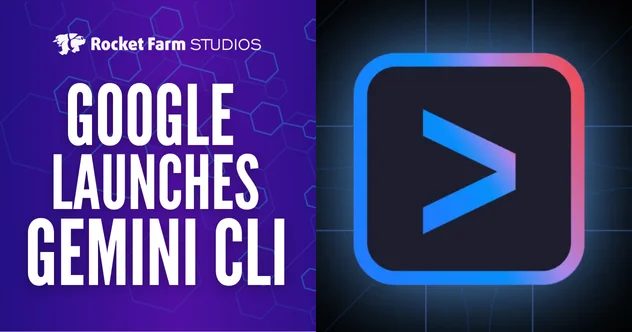Download our E-BOOK
The Evolution of AI Search: Past, Present, Future
February 12, 2024
by Dan Katcher
Prologue: Setting the Scene
It’s a typical Wednesday morning. As you sip your coffee, your smartphone rests on the kitchen counter, displaying a list of local weather updates and news tailored to your interests. You ask it to find a nearby vegan bakery, and within seconds, it presents you with a list of options, complete with reviews and directions.
Later, at work, you query a virtual assistant to summarize the latest research in renewable energy. By lunchtime, you’ve booked a weekend getaway, chosen after a brief conversation with your AI-powered travel planner. This seamless integration of AI-driven search into our daily lives might seem like a scene from a sci-fi novel, yet it is our everyday reality.
But how did we arrive at this juncture? What path led us from room-sized computers to AI that understands and anticipates our needs?
Our journey begins in the mid-20th century, with visionary scientists like Alan Turing and Marvin Minsky who dared to dream of machines that could think. In those early days, the concept of a search algorithm was rudimentary at best. Initial attempts at creating search technologies were limited, bound by the constraints of the technology and understanding of the era.
They were foundational, yet far from the intelligent, adaptive systems we interact with today.
These were the first steps in a long and winding road that has led us to the AI-driven search technology that is now an integral part of our lives.
As we look back on this journey, we must also look forward, pondering the question: How will the continuing evolution of AI shape the future of search, and in turn, our future?
In the chapters that follow, we will explore the evolution of AI search models, from their humble beginnings to the powerful tools they are today. We will see how each advancement not only transformed technology but also reshaped our society and our very understanding of what is possible. This is a story of innovation and imagination, a tale of how a simple idea blossomed into a technology that touches every aspect of our lives.
It’s a narrative about overcoming limitations, breaking barriers, and looking towards a future that is as exciting as it is uncertain.
Join Rocket Farm Studios to explore AI’s journey in search—from science fiction to daily reality. Learn how AI’s disruptive impact fosters progress, urging adaptation and embracing a future of limitless possibilities.
Chapter 1: The Dawn of AI – A Dream Takes Shape
The Visionary Beginnings
In the 1950s, a new field of study began to take shape, one that would eventually revolutionize the way we interact with the world. This was the era of the genesis of Artificial Intelligence (AI). Visionary scientists like Alan Turing, often regarded as the father of theoretical computer science and AI, laid the groundwork for what was to come.
Turing’s seminal paper, “Computing Machinery and Intelligence” (1950), posed the provocative question, “Can machines think?” This inquiry not only sparked a flurry of scientific discourse but also laid the philosophical foundation for AI research.
Turing’s Legacy and Beyond
Turing’s work extended beyond theoretical realms. His development of the Turing Test was a practical attempt to define machine intelligence. Though simple by today’s standards, this test was a significant first step in evaluating the ability of a machine to exhibit human-like intelligence.
Turing’s ideas were not just influential in the abstract; they were instrumental in the development of early computing machines like the Automatic Computing Engine (ACE).
The Era of Minsky and McCarthy
The late 1950s and early 1960s saw the rise of other pivotal figures like Marvin Minsky and John McCarthy. McCarthy, often called the “father of AI,” coined the term “Artificial Intelligence” in 1956, and organized the famous Dartmouth Conference, where the term was officially adopted and the field was formally born.
McCarthy’s contribution to AI included the development of Lisp, a programming language that became crucial for AI research.
Marvin Minsky, another key figure, co-founded the Massachusetts Institute of Technology’s AI laboratory in 1959. His work on neural networks and the development of the Perceptron, an early neural network machine, paved the way for future explorations into machine learning.
The Initial Steps in Search
Simultaneously, the groundwork for search technology was being laid. Early search algorithms were primitive, often relying on basic keyword matching and manual indexing of information. These methods were limited in scope and efficiency, unable to handle the growing amount of information available.
However, they were crucial first steps, representing the initial attempts at organizing and retrieving information in a digital format.
One such example was the development of “indexing” in libraries, which became a precursor to search algorithms. While these systems were far from the AI-driven search tools we know today, they represented the first attempts to manage and retrieve large datasets.
The Dreams of What Could Become
As these early endeavors in AI and search technology began to unfold, so too did the dreams of what they could become. Visionaries foresaw a future where machines could not only mimic human thought processes but also access and analyze vast quantities of information far beyond human capability.
This vision, ambitious and far-reaching, set the stage for the advancements that would follow in the decades to come.
This early period in AI history was marked by optimism and the belief that general artificial intelligence was just around the corner. While these high expectations were tempered by subsequent challenges and setbacks in the field, the foundational work done during this era laid the essential groundwork for the future of AI and search technology.
Chapter 2: Early Algorithms – The Blueprint of Modern Search
The Rise of Rule-Based Systems
As the 1980s dawned, the field of Artificial Intelligence began to pivot towards more practical applications. This era saw the rise of rule-based systems, a significant leap forward in the quest to make machines ‘intelligent’. Rule-based systems, also known as expert systems, were designed to mimic the decision-making ability of a human expert.
By encoding knowledge in a set of rules, these systems could perform tasks like medical diagnosis, mineral prospecting, and, importantly, rudimentary information search and retrieval.
One notable example was the development of the MYCIN system in the 1970s, which continued to influence AI research into the 1980s. MYCIN was designed to diagnose blood infections and recommend antibiotics, showcasing how rule-based logic could be applied in a practical, real-world context.
The Advent of Internet Search Engines
The 1990s marked a paradigm shift with the advent of the internet. This new digital frontier necessitated sophisticated methods for organizing, searching, and retrieving vast amounts of information. Early internet search engines like Archie and AltaVista emerged, pioneering the use of more advanced algorithms for indexing and retrieving web content.
These engines used keyword-based techniques, which, while a significant improvement over earlier methods, still struggled with issues like relevance and comprehensiveness.
One of the breakthroughs of this era was the use of ‘web crawlers’ – automated programs that scoured the internet to index web pages. This innovation vastly improved the scope and freshness of search results, setting a new standard in search technology.
The PageRank Algorithm – A Game Changer
The late 1990s witnessed the entry of Google, a company that would come to redefine the landscape of search technology. Google’s PageRank algorithm, developed by founders Larry Page and Sergey Brin, introduced a novel approach to search – ranking pages based on their links from other pages.
This method, grounded in the idea that the number and quality of inbound links to a page indicated its importance, led to more relevant and useful search results.
PageRank was a milestone in search technology, moving beyond simple keyword matching to a more nuanced understanding of web content and its interconnectedness.
The Limitations of Early Search
Despite these advancements, early search technologies had their limitations. Keyword-based searches often returned irrelevant or low-quality results, and the algorithms struggled to interpret the context and nuance of user queries.
These limitations highlighted the need for more sophisticated AI techniques to enhance search accuracy and relevance.
Setting the Stage for AI-Driven Search
As the millennium turned, it became increasingly clear that the future of search lay in harnessing the power of AI. The limitations of rule-based systems and keyword-driven algorithms set the stage for the next wave of innovation in search technology.
This period of exploration and development laid the groundwork for the integration of machine learning and natural language processing, which would soon transform search technology into the intelligent, responsive systems we see today.

Chapter 3: The Learning Machines – AI Gets Smarter
The Shift to Machine Learning
The late 1980s and 1990s marked a pivotal shift in the AI landscape, with the burgeoning field of machine learning beginning to take center stage. This new approach to AI represented a significant departure from the rule-based systems of the past.
Instead of relying on pre-programmed rules, machine learning algorithms could ‘learn’ from data, identifying patterns and making decisions with minimal human intervention.
This shift heralded a new era for search technology, one that promised greater accuracy, relevance, and adaptability.
Pioneering Moments in Machine Learning
This era witnessed several key breakthroughs in machine learning that would have a lasting impact on search technology. One of the most influential was the development of neural networks – systems inspired by the human brain’s structure and function.
These networks, composed of interconnected nodes (mimicking neurons), could learn and make decisions in a more nuanced and sophisticated manner than traditional algorithms.
Another landmark was the introduction of the Support Vector Machine (SVM) in the 1990s. SVMs represented a powerful method for classification and regression tasks, becoming a staple in the machine learning toolkit.
These innovations in machine learning were instrumental in enhancing the capability of search technologies to handle complex, unstructured data.
Early AI in Search
As machine learning advanced, its applications in search technology began to emerge. Early implementations focused on improving the accuracy of search results through more sophisticated indexing and ranking algorithms.
These machine learning-based systems could analyze user behavior, learning over time to improve the relevance of search results.
One notable example was the use of machine learning in spam detection, a significant challenge for early search engines.
By analyzing patterns in data, these systems could effectively filter out irrelevant or malicious content, greatly enhancing the quality of search results.
The Evolution of Search Algorithms
The evolution of search algorithms during this period was marked by a gradual shift from simple keyword matching to more complex, context-aware systems. Machine learning algorithms began to understand not just the words in a query, but their meaning and context.
This advancement allowed for more nuanced and accurate search results, tailored to the specific needs and intentions of users.
Challenges and Limitations
Despite these advancements, the integration of machine learning into search technology was not without challenges. Early machine learning models required significant computational resources and large datasets for training, which were not always readily available.
Additionally, these models often lacked transparency and interpretability, making it difficult to understand and refine their decision-making processes.
Chapter 4: Google and the Search Revolution
The Advent of Internet Search Engines
The 1990s heralded a new era in the world of search, marked by the rise of the internet and the consequent need for efficient search engines. This period saw the emergence of several pioneering search engines, each attempting to organize and make sense of the ever-growing expanse of the World Wide Web.
Google’s Entry: A Paradigm Shift
It was in this dynamic landscape that Google entered in 1998, founded by Larry Page and Sergey Brin. Google distinguished itself from its competitors through its unique approach to search, embodied in the PageRank algorithm.
This algorithm, based on the premise that the importance of a webpage could be determined by the number and quality of links to it, revolutionized search engine results’ relevance and accuracy.
PageRank: A New Approach to Search
The innovation of PageRank lay in its ability to rank web pages not just based on the frequency of search terms, but by their relative importance on the web. This approach marked a significant departure from the existing keyword-based search algorithms, which often led to irrelevant or easily manipulated results.
PageRank, by leveraging the power of the web’s inherent structure, provided a more democratic and organic way of determining page relevance.
Beyond PageRank: Google’s Continuous Innovation
Google’s innovations in search technology didn’t stop with PageRank. They continued to evolve their search algorithms, integrating sophisticated machine learning techniques to improve search quality further.
One such example was the introduction of Google’s “Hummingbird” algorithm in 2013, which marked a significant shift towards understanding the intent and contextual meaning of user queries, rather than just the keywords.
The Impact on the Industry
Google’s rise to prominence had a profound impact on the search engine industry. It set new standards for accuracy, relevance, and speed, compelling other players in the market to innovate rapidly.
Google’s success demonstrated the critical importance of sophisticated, AI-driven search algorithms in providing valuable, user-friendly search experiences.
Challenges and Controversies
However, Google’s dominance in search also raised questions and challenges. Issues like privacy, data security, and the potential for algorithmic bias in search results became topics of intense debate.
The company’s vast repository of user data, used to personalize and improve search results, sparked concerns over user privacy and the ethical use of data.
Chapter 5: The Deep Learning Breakthrough
The Advent of Deep Learning
As we entered the 2010s, a new technological revolution was taking shape within the realm of AI: the era of deep learning. Deep learning, a subset of machine learning, involves the use of neural networks with many layers (hence the term “deep”) to model complex patterns in data.
This breakthrough was a quantum leap from traditional machine learning techniques, offering unprecedented advancements in AI’s capabilities, particularly in the fields of image and speech recognition, natural language processing, and, crucially, search technology.
The Game-Changing Impact of Neural Networks
The cornerstone of deep learning is the neural network, which simulates the human brain’s functioning to process data. Unlike traditional machine learning models, deep neural networks can handle vast amounts of unstructured data, learning intricate patterns and making highly accurate predictions.
In the context of search, this meant a significant leap in understanding and processing user queries, moving beyond mere keyword matching to a deeper understanding of language and context.
Revolution in Search Technology
Deep learning dramatically enhanced search engine capabilities. Google, always at the forefront of search technology, integrated deep learning into its algorithms to better understand user intents, contextualize queries, and deliver more accurate and relevant search results.
One such integration was the introduction of the BERT (Bidirectional Encoder Representations from Transformers) model in 2019, which allowed Google to understand the nuances of language in search queries better than ever before.
Beyond Text: The Multimodal Capabilities of Deep Learning
Deep learning also ushered in an era where search was not limited to text. Image and voice search capabilities improved dramatically, thanks to deep learning algorithms’ ability to accurately interpret and process visual and audio data.
This advancement made search more versatile and user-friendly, catering to a broader range of user needs and preferences.
The Challenges and Ethical Considerations
While the advancements in deep learning powered a new era of search technology, they also brought forth new challenges. The ‘black box’ nature of deep neural networks, where the decision-making process is not always transparent, raised concerns about the interpretability and fairness of these models.
Additionally, as search engines became more powerful and personalized, concerns around privacy and data security became more pronounced.

Chapter 6: The Age of Language Models
Emergence of Advanced Language Models
In the realm of AI-driven search, the development of advanced language models like GPT (Generative Pretrained Transformer) and BERT (Bidirectional Encoder Representations from Transformers) marked a significant milestone.
These models, built upon the foundations of deep learning, brought a newfound sophistication to natural language processing (NLP), enabling machines to understand, interpret, and generate human language with remarkable accuracy.
GPT: Revolutionizing Language Understanding
Introduced by OpenAI, the GPT series of models, especially the later versions like GPT-3, represented a leap forward in language generation and comprehension. These models, trained on vast amounts of text data, could generate coherent and contextually relevant text, answer questions, and even create content that is indistinguishable from that written by humans.
The implications for search were profound – GPT could provide more conversational and accurate responses to user queries, making the search experience more natural and intuitive.
BERT: A New Era in Search Queries
Google’s BERT, introduced in search algorithms in 2019, was another game-changer. It enhanced the ability of search engines to understand the context of words in search queries. This meant that search engines could grasp the nuances of language, including the intent behind queries, leading to more relevant and precise search results.
BERT’s impact was significant in improving searches involving conversational queries or prepositions, where the context is crucial for understanding the query’s true intent.
A New Era of Search
These advanced language models transformed search from a tool that simply matched keywords to one that understood and interacted with users in a more human-like manner.
Search queries became more conversational, and the results became more aligned with the user’s intent, leading to a more efficient and satisfying search experience.
The Disruptive Impact on Traditional Search Engines
The advent of these models posed a challenge to traditional search engines. The ability of models like GPT and BERT to generate and process language in a human-like manner opened up possibilities for new types of search engines and applications, potentially disrupting the long-standing dominance of traditional players in the field.
Ethical Considerations and Future Implications
With great power comes great responsibility. The capabilities of these language models brought to the fore ethical considerations such as privacy, misinformation, and the potential misuse of AI-generated content. As these models continue to evolve, it becomes imperative to address these concerns, ensuring that the future of AI-driven search is grounded in ethical and responsible practices.
Chapter 7: Disruption and Its Ripple Effects
Challenging the Status Quo in Search Technology
As advanced AI models like GPT and BERT entered the scene, the landscape of search technology faced a seismic shift. These models didn’t just improve existing systems; they challenged the very foundations of how search engines operated.
The traditional model of search, based on indexing web pages and matching keywords, was suddenly juxtaposed against AI-driven engines capable of understanding and generating human-like responses.
This disruption signified a paradigm shift, signaling a move towards more intuitive, conversational, and context-aware search experiences.
Impact on Google and Other Search Giants
For industry giants like Google, this wave of AI innovation prompted a reevaluation of their approach to search.
Google, known for its continuously evolving search algorithms, embraced the change by integrating BERT into its system, enhancing its ability to understand the nuances of language.
However, the rise of AI-driven search models also opened the door for new players and startups, leveraging the power of advanced AI to offer alternative search experiences, potentially challenging the dominance of established players.
The Democratization of Information Access
One of the most profound impacts of AI-driven search is its role in democratizing information access. Advanced AI models have significantly reduced barriers to accessing information, offering more accurate, relevant, and personalized search results.
This democratization extends beyond mere convenience; it levels the informational playing field, allowing users from various backgrounds and skill levels to access and leverage information that was once difficult to find.
AI in Search: Beyond Web Pages
The influence of AI in search technology extends beyond traditional web searches. AI-driven search tools are now integral in various sectors, from academic research, where they assist in sifting through vast databases of scholarly articles, to healthcare, where they aid in diagnosing diseases and suggesting treatments.
The versatility and adaptability of AI-driven search have made it an indispensable tool across industries.
The Positive Disruption: Innovation and Growth
While disruption often carries a negative connotation, the AI-driven transformation of search technology exemplifies ‘positive disruption.’ This shift has spurred innovation, encouraged competition, and elevated the overall standard of search technology.
It’s a testament to the fact that disruption, when harnessed correctly, can be a powerful catalyst for progress and improvement.
Adapting to a New Era of Search
The evolution of search technology poses a significant question: how do we adapt to this new era? The answer lies in embracing the change, understanding the potential of AI-driven search, and preparing for a future where search technology continues to evolve and shape our interaction with information.
It’s about recognizing that this disruption isn’t just a challenge to the status quo but an opportunity to redefine it.
Chapter 8: AI Search – A Force for Good
Beyond Convenience: The Transformative Power of AI-Driven Search
AI-driven search transcends the boundaries of convenience and efficiency. It represents a transformative force in the way we access and utilize information.
This transformation is not just about faster or more relevant search results; it’s about fundamentally changing how we interact with the world’s knowledge.
Democratizing Knowledge and Information
One of the most significant impacts of advanced AI search technologies is the democratization of information. These tools have made it easier for people from all walks of life to access and understand information that was previously out of reach.
Whether it’s a student in a remote village accessing global academic resources or a small business owner tapping into market trends, AI-driven search tools are leveling the informational playing field.
AI in Education and Research
In the realm of education and research, AI-driven search engines have become invaluable tools. They have enabled students and researchers to sift through vast amounts of data, uncovering insights and information that accelerate learning and innovation.
This capability is not just enhancing education; it’s also driving forward scientific research, opening up new frontiers in every field from medicine to environmental science.
Enhancing Business and Industry
AI-driven search is also reshaping the business landscape. Companies are leveraging these technologies to gain insights into market trends, consumer behavior, and competitive landscapes.
This intelligence is not just driving better business decisions; it’s fostering a more dynamic and responsive business environment.
The Role of AI in Societal Progress
The ripple effects of AI-driven search extend into broader societal progress. By providing more equitable access to information, these technologies are helping to bridge the digital divide.
They are tools for empowerment, enabling communities to access the information they need to advocate for themselves and drive social change.
Disruption as the Antidote to Stagnation
The disruption brought about by AI-driven search is a positive force against the stagnation of ideas and innovation. It challenges existing paradigms and pushes us to rethink the way we interact with information. This disruption is not just beneficial; it’s essential for continuous growth and advancement.
Adapting to the AI-Driven Future
Embracing the AI-driven future of search requires an openness to change and a willingness to adapt. It involves understanding the potential of these technologies and preparing for a world where AI is an integral part of how we seek and process information.
It’s about recognizing that AI-driven search is not a threat but an opportunity to elevate our collective capabilities.

Chapter 9: Adapting to an AI-Driven Future
Embracing Change in the Age of AI
The rapid advancement of AI-driven search technology is not just a technological phenomenon; it’s a cultural and societal shift. Adapting to this new era requires more than just technical acumen; it demands a mindset that is open to change and innovation.
As AI continues to redefine the landscape of information search and retrieval, individuals, businesses, and societies at large must learn to navigate and leverage these new tools effectively.
Ethical Considerations in AI Development
With the power of AI comes a significant responsibility to address the ethical implications of these technologies. Issues such as data privacy, algorithmic bias, and the potential for misuse need to be at the forefront of AI development and deployment. Ensuring that AI-driven search technologies are fair, transparent, and respectful of user privacy is crucial in maintaining public trust and ensuring the responsible use of AI.
- Data Privacy and Security: As AI systems process vast amounts of personal data, ensuring the security and privacy of this data is paramount. Users need to be informed about how their data is used and must have control over their information.
- Algorithmic Bias and Fairness: AI algorithms can inadvertently perpetuate biases present in their training data. It’s essential to continually audit and refine these systems to ensure fairness and prevent discrimination.
- Transparency and Accountability: There should be clarity in how AI-driven search engines operate and make decisions. Holding these systems accountable for their outputs is vital in maintaining ethical standards.
The Future of Work and AI
AI-driven search technologies will inevitably impact the workforce. While AI can automate certain tasks, it also creates opportunities for new kinds of jobs and industries. Preparing the workforce for this shift involves education and training in digital literacy and AI technologies.
It’s about adapting skill sets to a future where AI is a ubiquitous part of the work environment.
The Role of Humans in an AI-Driven World
Despite the advanced capabilities of AI, the human element remains irreplaceable. Human oversight, empathy, creativity, and ethical judgment are crucial in guiding the development and application of AI technologies.
The future of AI-driven search is not about replacing human intelligence but augmenting it, creating a synergy where humans and machines work together to achieve more than either could alone.
Preparing for an AI-Integrated Future
Preparing for an AI-integrated future involves fostering a culture of lifelong learning and adaptability. It’s about staying informed of the latest developments in AI and understanding their implications.
Governments, educational institutions, and industries must work together to create policies and frameworks that support the ethical and effective integration of AI into society.
Epilogue: A New Chapter
As we close this exploration of the evolution of AI-driven search, it’s evident that we are not just witnessing a technological revolution; we are part of a pivotal moment in human history. At Rocket Farm Studios, we stand at this crossroads, both anxious and excited about what lies around the bend.
The journey from rudimentary search algorithms to the sophisticated AI models of today is a narrative of relentless human curiosity and ingenuity, a story that resonates deeply with our ethos.
Reflecting on the Journey
This journey began with visionary scientists who dared to dream of machines that could think and learn. From the early days of rule-based systems to the advanced neural networks of today, each step in this journey has built upon the last, creating a rich tapestry of innovation.
The evolution of AI in search is not just a series of technological advancements; it’s a reflection of our collective growth and learning.
The Impact on Society and Technology
The impact of AI-driven search extends far beyond the confines of technology. It has reshaped industries, transformed how we access information, and altered the very fabric of our daily lives.
This technology has democratized knowledge, broken down barriers to information access, and opened up new avenues for exploration and discovery.
Looking Ahead with Rocket Farm Studios
At Rocket Farm Studios, we are keenly aware of the transformative power of AI in search. As we look to the future, we recognize the immense potential and the challenges that come with it.
Our team is both anxious and excited about the possibilities – anxious about the unknown challenges, but immensely excited about the potential to innovate and create.
We believe that the next chapter in AI and search will be one of extraordinary innovation and profound impact.
The Role of Adaptation and Learning
Embracing the future of AI-driven search requires a commitment to adaptation and lifelong learning. It calls for an openness to new ideas and a willingness to rethink how we interact with technology.
As AI continues to evolve, staying informed, engaged, and adaptable will be crucial in leveraging these technologies for the greater good.
A Call to Action and Invitation
This narrative of AI and search is not just a story to be observed; it’s a journey to be actively participated in. It’s a call to action for innovators, policymakers, educators, and individuals to contribute to shaping a future where AI-driven search technology enhances our capabilities, broadens our horizons, and elevates our collective potential.
At Rocket Farm Studios, we are eager to be part of this journey, and we invite you to join us. If you share our passion for innovation and our vision for a future enhanced by AI, we’d be thrilled to have you come along.
Together, we can explore the untapped possibilities of AI and search, shaping a future that’s as exciting as it is uncertain.
References
- Alan Turing’s Original Papers:
- “Computing Machinery and Intelligence”: https://www.csee.umbc.edu/courses/471/papers/turing.pdf
- “On Computable Numbers, with an Application to the Entscheidungsproblem”: https://www.cs.virginia.edu/~robins/Turing_Paper_1936.pdf
- John McCarthy’s Contributions:
- “Recursive Functions of Symbolic Expressions and Their Computation by Machine, Part I”
- Google’s PageRank Algorithm:
- “The PageRank Citation Ranking: Bringing Order to the Web”: http://ilpubs.stanford.edu:8090/422/
- Development of Deep Learning:
- “Deep Learning”: https://www.nature.com/articles/nature14539
- BERT and Transformers:
- “BERT: Pre-training of Deep Bidirectional Transformers for Language Understanding”: https://arxiv.org/abs/1810.04805
- GPT and Language Models:
- “Language Models are Few-Shot Learners”: https://arxiv.org/abs/2005.14165
Further Reading
- “Life 3.0: Being Human in the Age of Artificial Intelligence” by Max Tegmark:
- “The Master Algorithm” by Pedro Domingos:
- “Superintelligence: Paths, Dangers, Strategies” by Nick Bostrom:
- Google AI Blog:
- “The Singularity is Near” by Ray Kurzweil:
- “AI Superpowers” by Kai-Fu Lee:
Related Blog & Posts

How to Increase conversion in 2025
With over 25 years in technology and product development, Dan leads Rocket Farm Studios with a commitment to innovation and growth.
Ready to turn your app idea into a market leader? Partner with Rocket Farm Studios and start your journey from MVP to lasting impact.”
Teams for App Development
We help companies build their
mobile app faster with go to market strategy

Technology and UX Audits

Early Design Sprints

MVP Creation

App Store

Growth Teams
Download Our Free E-Book
Whether you’re launching a new venture or scaling an established product, Rocket Farm Studios is here to turn your vision into reality. Let’s create something extraordinary together. Contact us to learn how we can help you achieve your goals.






